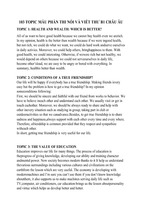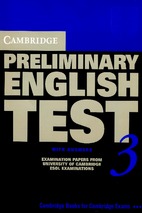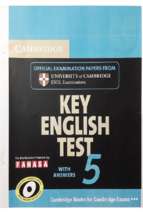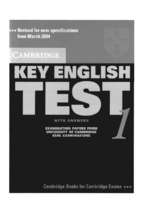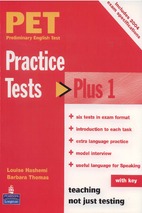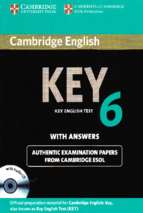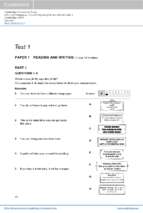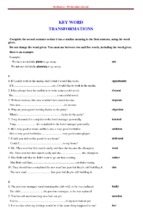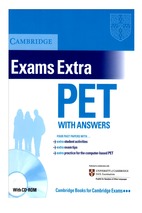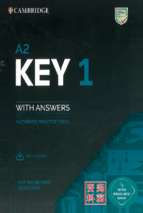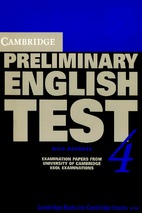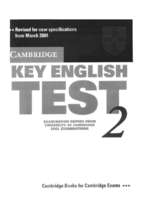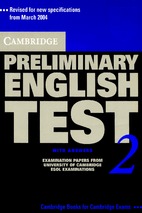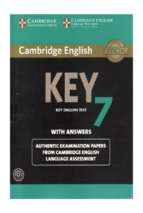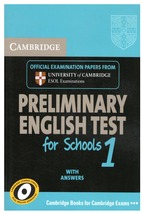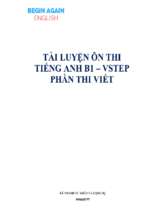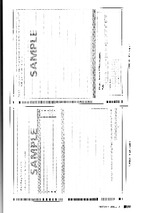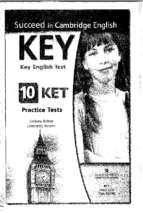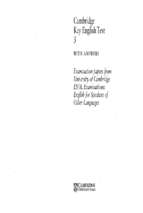i
VIETNAM NATIONAL UNIVERSITY, HANOI
UNIVERSITY OF LANGUAGES AND INTERNATIONAL STUDIES
________________________
DINH MINH THU
WASHBACK OF AN ENGLISH ACHIEVEMENT TEST TO TEACHERS
A STUDY AT A UNIVERSITY IN VIETNAM
Nghiên cứu tác động dội ngược của bài thi tiếng Anh hết học phần lên giảng viên tại
một trường Đại học ở Việt Nam
Major: English Language Teaching Methodology
Code: 9140231.01
SUMMARY OF PHD DISSERTATION
Hanoi - 2021
ii
This dissertation has been carried out at Vietnam National University, Hanoi.
University of Languages and International Studies.
Supervisors:
Assoc. Prof. Dr. Nguyen Van Trao
Dr. Duong Thu Mai
Examiner 1: Assoc. Prof. Dr. Vu Thi Phuong Anh
Examiner 2: Assoc. Prof. Dr. Phan Van Que
Examiner 3: Assoc. Prof. Dr. Hoang Tuyet Minh
iii
The thesis will be defended at the Board of Examiners of University of Languages and
International Studies – Vietnam University, Hanoi at 8:30 on January 5, 2021.
The thesis can be found in:
-
National Library of Vietnam;
Library and Information Center, Vietnam National University.
ORIGINALITY STATEMENT
‘I hereby declare that this submission is my own work. To the best of my knowledge and
belief it contains no materials published or written by another person, or substantial
proportions of material which have been accepted for the award of any other degree or
diploma at University of Languages and International Studies – Vietnam National
University or any other educational institutions, except where due acknowledgement is
made in the thesis. Any contribution made to the research by others is explicitly
acknowledged in the thesis. I also declare that the intellectual content of this thesis is the
product of my own work, except to the extent that assistance from others in the project’s
design and conception or in style, presentation and linguistic expression is
acknowledged.’
Signed:
Date: 20 November, 2020
iv
ACKNOWLEDGEMENTS
On the completion of this thesis, I am indebted and owe gratitude to many people whose
names cannot all be mentioned here. Nonetheless, I would like to take this opportunity to
acknowledge the following individuals and organisations for their direct contributions.
First, my heartfelt appreciation goes to my supervisors, Associate Professor Doctor
Nguyen Van Trao and Doctor Duong Thu Mai, for their continuous and valuable support
and guidance throughout these years of challenging academic work. They are really
caring and inspiring supervisors. They have generously been sharing their wisdom,
expertise, time with me since my first day with my research. Their inspiration,
constructive comments and strictness build me strongly in my academic life.
Second, I am grateful to Doctor Huynh Anh Tuan, Dean of Postgraduate School for his
instant, continuous and generous support. He has listened to my problems carefully and
patiently and helped me solve them out. Thanks were sent to the staff in the Post-graduate
School, especially to Ms. Nguyen Ai Anh, for their valuable helps.
Third, my special gratitude was expressed to four teacher participants at the researched
university, who I do not mention their names here for the ethical considerations. Without
their willingness, generosity, kind-heartedness and patience, I could not be able to enjoy
comfortable classroom observations and interviews for the rich data sources of the thesis.
Fourthly, I owe thanks to my leaders, my colleagues and my students at my university.
They gave me time, encouragement and understanding during the time I conducted this
research.
Finally, my wholehearted appreciation goes to my beloved family, especially my parents,
my mother-in-law, my brother, my husband and my two children, for their endless
unconditional love and sacrifices for me not only in the hard research time, but also in all
my life. Without their emotional and material support, I had no anchors to complete this
thesis.
v
ABSTRACT
Premised in the field of language testing and assessment, this thesis examined the
washback of an English achievement test on the teachers at a Vietnamese university.
Washback was selected to research for its contribution to the fairness to students
(Messick, 1996) and the education for language teachers (Cheng, 1999; Watanabe, 2004,
etc.). An English achievement test (EAT) in the research context was designed in the
Vietnamese MoET's demand of innovating language testing and assessment at the tertiary
level in the epoch of globalisation. The teachers became the informants for their key role
in generating positive washback to promote students' learning (Antineskul & Sheveleva,
2015; Bailey, 1996, 1999; etc.). Two research questions were raised on the washback
effects on the teachers' perceptions and practices correspondingly. The thesis conceptual
framework was built up from the literature review, particularly from six washback
theories proposed by Alderson and Wall (1993), Hughes (2003,) Bailey (1996), Bachman
and Palmer (1996), Green (2007) and Shih (2009). Three major aspects with detailed subaspects were sketched out, which included washback on teachers’ perceptions and
practices of the teaching contents, teaching methodology and professional development.
The newly-developed framework was used to review the empirical research on washback
on tertiary English language teachers. The current research underwent a qualitative single
case involving four teacher participants. A baseline study was conducted to shed light on
the background factors for the research, which were contextual factors, test factors and
teacher factors. The present study mainly exploited interviews, observations and followup interviews as the data collection instruments. Braun and Clarke (2006)’s six steps of
thematic analysis were applied to the data analysis. Findings and discussion were
presented in terms of four aspects: (1) the teaching objectives, (2) teaching contents, (3)
teaching methodology and (4) professional development under the EAT washback. With
regards the teaching objectives, all the participants revealed their awareness of a dual
target of support of the students’ test pass in accordance with improvement of their
communicative ability. Their instructions in the first lessons were coherent with those
vi
stated in the perceptions interviews. In terms of the teaching contents, the core book
“Complete PET” showed its pivotal significance in both teachers’ perceptions and
practices. In addition, the teaching methodology was changed when the EAT comprised
the four language skills rather than two skills of the previous TOEIC test. The teachers
stated their appreciation of the communicative language teaching while their practice was
shaped with more features of the grammar-translation. In terms of the last aspect in
concern, i.e, the teachers’ career development, while the teachers expected more training
and sharing regarding the new test, few professional activities were witnessed throughout
the research time. Positive washback was found in the teachers' alignment between the
test contents and the taught contents, their positive feeling toward the textbook, and their
motivator role, etc. Negative washback evidence lay in the teachers' teaching-to-the-test,
teacher-centred classes, etc. Most findings supported previous washback studies. New
findings emerged, such as the relation between the teachers’ professional status and their
perceptions and practices under the EAT. The thesis has made new contributions to the
washback research area both theoretically and empirically. Implications for classroom
pedagogy, teacher education and further research have been provided in the conclusion.
vii
TABLE OF CONTENTS
ORIGINALITY STATEMENT.................................................................................................... i
ACKNOWLEDGEMENTS ........................................................................................................ iv
ABSTRACT ................................................................................................................................... v
TABLE OF CONTENTS ........................................................................................................... vii
LIST OF ABBREVIATIONS AND ACRONYMS .................................................................. xii
LIST OF FIGURES ................................................................................................................... xiii
LIST OF TABLES ..................................................................................................................... xiv
Chapter 1. INTRODUCTION ..................................................................................................... 1
1.1.
Rationale for the Study..................................................................................................... 1
1.1.1. Why language testing and assessment? ......................................................................... 1
1.1.2. Why washback research? ............................................................................................... 2
1.1.3. Why Vietnamese teachers at the tertiary level in washback research? ......................... 3
1.2. Significance of the Study ..................................................................................................... 4
1.3. Context of the Study in Vietnam .......................................................................................... 6
1.4. Research Questions .............................................................................................................. 8
1.5. Scope of the Study................................................................................................................ 9
1.6. Structure of the Study ......................................................................................................... 10
1.7. Chapter Summary............................................................................................................... 10
Chapter 2. LITERATURE REVIEW ....................................................................................... 12
2.1. Basic Testing-and-Assessment Concepts ........................................................................... 12
2.1.1. Concepts of language testing and assessment ............................................................. 12
2.1.2. Achievement tests ........................................................................................................ 14
2.1.3. Test usefulness ............................................................................................................. 16
2.2. Washback, Teachers’ Perceptions and Teachers’ Practices ............................................... 18
2.2.1. Washback..................................................................................................................... 19
2.2.1.1. Conceptualization of washback ............................................................................. 19
2.2.1.2. Conditions for washback existence ........................................................................ 22
2.2.1.3. Washback directions .............................................................................................. 23
2.2.1.3.1. Negative washback ............................................................................................. 23
2.2.1.3.2. Positive washback ............................................................................................... 25
viii
2.2.1.4. Washback models .................................................................................................. 29
2.2.2. Teachers’ perceptions .................................................................................................. 35
2.2.3. Teachers’ practices ...................................................................................................... 39
2.2.4. The relationship between teachers’ perceptions and practices .................................... 42
2.2.5. Proposed conceptual framework for the present study ................................................ 43
2.3. Empirical Research on Washback on EFL Teachers’ Perceptions and Practices at the
Tertiary Level ............................................................................................................................ 46
2.3.1. An overview of the washback research on EFL tertiary teachers ............................... 46
2.3.2. Washback of tests on teachers’ perceptions of teaching at the tertiary level .............. 47
2.3.3. Washback of tests on teachers’ practices of teaching at the tertiary level .................. 52
2.4. Chapter Summary............................................................................................................... 57
Chapter 3. METHODOLOGY .................................................................................................. 58
3.1. Research Design ................................................................................................................. 58
3.1.1. Rationales for the research design ............................................................................... 58
3.1.2. Research design ........................................................................................................... 61
3.2. Selection of the Case .......................................................................................................... 63
3.3. Settings for the Case Study ................................................................................................ 64
3.4. Participants ......................................................................................................................... 66
3.5. The Researcher’s Role ....................................................................................................... 68
3.6. Data Collection Instruments ............................................................................................... 70
3.6.1. The review of documents ............................................................................................ 71
3.6.2. Semi-structured interviews .......................................................................................... 73
3.6.3. Semi-structured classroom observations ..................................................................... 75
3.6.4. Follow-up interviews ................................................................................................... 77
3.7. Data Analysis Procedures .................................................................................................. 79
3.7.1. Transcriptions .............................................................................................................. 79
3.7.2. Data analysis ................................................................................................................ 80
3.7.2.1. Analysis of the interview data................................................................................ 81
3.7.2.2. Analysis of the observation data and the post interview data ................................ 85
3.8. Trustworthiness .................................................................................................................. 86
3.8.1. Credibility .................................................................................................................... 87
3.8.2. Transferability ............................................................................................................. 88
ix
3.8.3. Dependability............................................................................................................... 89
3.8.4. Confirmability ............................................................................................................. 90
3.9. Ethical considerations ........................................................................................................ 90
3.10. Chapter summary ............................................................................................................. 91
CHAPTER 4. FINDINGS .......................................................................................................... 92
4.1. EAT Washback on the Teachers’ Perceptions of Teaching at a University in Vietnam ... 94
4.1.1. The teaching objectives in the teachers’ perceptions of teaching ............................... 94
4.1.1.1. The necessity of supporting students’ success in the EAT .................................... 94
4.1.1.2. The requirement of enhancing students’ communication ability........................... 96
4.1.2. The teaching contents in the teachers’ perceptions of teaching .................................. 98
4.1.2.1. An appreciation of the textbook for students’ success in the EAT ........................ 98
4.1.2.2. The practicality of reducing the topics in the textbook to those in the EAT ....... 100
4.1.3. The teaching methodology in the teachers’ perceptions of teaching......................... 101
4.1.3.1. The consolidation of communicative language teaching ..................................... 102
4.1.3.2. More efforts in lesson planning in the presence of the EAT ............................... 104
4.1.3.3. A mix between English and Vietnamese as means of instruction ....................... 105
4.1.3.4. The necessity of supplying EAT skills and format and linguistic input in teaching
four language skills ........................................................................................................... 107
4.1.3.5. The supportive role of in-class assessment for the EAT...................................... 111
4.1.3.6. An EAT orientation in homework but a limited homework amount ................... 113
4.1.4. The professional development in the teachers’ perceptions of teaching ................... 114
4.1.4.1. Positive self-reflection ......................................................................................... 115
4.1.4.2. The need of more professional socialization ....................................................... 116
4.2. EAT Washback on the Teachers’ Practices of Teaching at a Vietnamese University ..... 118
4.2.1. The teaching objectives in the teachers’ practices of teaching .................................. 118
4.2.2. The teaching contents in the teachers’ practices of teaching..................................... 121
4.2.3. The teaching methodology in the teachers’ practices of teaching ............................. 122
4.2.3.1. Teaching four language skills. ............................................................................. 122
4.2.3.1.1. Prioritising the speaking skill............................................................................ 123
4.2.3.1.2. Teaching the speaking skill ............................................................................... 127
4.2.3.1.3. Teaching the listening skill, reading skill and writing skill .............................. 139
4.2.3.2. Treating the mock test .......................................................................................... 142
x
4.2.4. The professional development in the teachers’ practices of teaching ....................... 148
4.3. The Relationship between the Teachers’ Perceptions and Practices of Teaching under the
Washback of the EAT at a University in Vietnam .................................................................. 149
4.4. Chapter Summary............................................................................................................. 153
CHAPTER 5. DISCUSSION ................................................................................................... 157
5.1. EAT Washback on the Teachers’ Perceptions and Practices of Teaching ....................... 157
5.1.1. EAT washback on the teachers’ perceptions of teaching of teaching ....................... 157
5.1.2. EAT washback on the teachers’ practices of teaching .............................................. 161
5.2. Factors Affecting the EAT Washback on Teachers’ Perceptions and Practices of Teaching
................................................................................................................................................. 164
5.3. Chapter Summary............................................................................................................. 167
CHAPTER 6. CONCLUSION AND IMPLICATIONS ........................................................ 169
6.1. Summary of Key Findings ............................................................................................... 169
6.1.1. EAT washback on the teachers’ perceptions of teaching at a university in Vietnam 169
6.1.2. EAT washback on the teachers’ practices of teaching at a university in Vietnam .... 170
6.2. Research limitations ......................................................................................................... 172
6.3. Implications for Classroom Pedagogy, Teacher Education and Research ....................... 173
6.3.1. Implications for classroom pedagogy ........................................................................ 173
6.3.2. Implications for teacher education ............................................................................ 174
6.3.3. Implications for research ........................................................................................... 175
REFERENCES .......................................................................................................................... 177
APPENDICES ........................................................................................................................... 194
APPENDIX A. A SUMMARY TABLE OF EMPIRICAL WASHBACK RESEARCH ...... 194
APPENDIX B. INTERVIEW GUIDLINE FOR TEACHER FACTORS .............................. 197
APPENDIX C. THE EAT FORMAT IN COMPARISON WITH THE PET FORMAT ....... 198
APPENDIX D. A SAMPLE OF THE EAT ............................................................................ 203
APPENDIX E. A SAMPLE OF THE TEXTBOOK CONTENTS ......................................... 206
APPENDIX F. A SAMPLE OF TEACHERS’ SUPPLEMENTARY MATERIALS ............ 211
APPENDIX G. THE SYLLABUS FOR COURSE ENGLISH 2 ........................................... 213
APPENDIX H. INFORMED LETTER OF CONSENT ......................................................... 220
APPENDIX I. WORKING SCHEDULES WITH PARTICIPATING TEACHERS ............. 222
xi
APPENDIX J1. THE FIRST INTERVIEW GUIDELINE FOR TEACHERS’ PERCEPTIONS
................................................................................................................................................. 226
APPENDIX J2. THE SECOND INTERVIEW GUIDELINE FOR TEACHERS’
PERCEPTIONS ...................................................................................................................... 229
APPENDIX K. A SAMPLE OF PERCEPTION INTERVIEW TRANSCRIPTS ................. 235
APPENDIX L. A SAMPLE OF CLASSROOM OBSERVATION TRANSCRIPTS ........... 246
APPENDIX N. A SAMPLE OF FOLLOW-UP INTERVIEW TRANSCRIPTS .................. 250
xii
LIST OF ABBREVIATIONS AND ACRONYMS
B
:
BEC
Both perceptions and practices
Business English Certificate
CEFR
CET
CO
EAT
:
:
:
:
Common European Framework for Reference
College English Test
Classroom Observation
English achievement test
EEE
EEU
:
:
Exit English Examination
Entrance Exam of the Universities
FI
:
Follow-up Interview
HEIs
:
Higher education institutions
HKCEE
:
Hong Kong Certificate of Education Examination
IELTS
:
International English Language Testing System
Int
:
Interview
INUEE
:
Iranian National University Entrance Exam
MCQs
MoET
NMET
Per
:
:
:
:
Multiple choice questions
Ministry of Education and Training
National Matriculation English Test
Perception(s)
PD
:
Professional Development
PET
:
Preliminary English Test
Pra
QĐ-TTg
SFRLV
:
:
Ss
TACS
:
:
Practice(s)
Quyết định của Thủ tướng Chính phủ
Six-Scale Framework of Reference for Languages: Learning, Teaching and
Assessment for Vietnam
Students
Tiếng Anh cơ sở
TOEIC
UEEs
VCEE.
:
:
:
Test of English for International Communication
University entrance examinations
Vietnam’s College English Entrance Exam
VSTEP
:
Vietnamese Standardised Test of English Proficiency
xiii
LIST OF FIGURES
Figure 2.1. Correspondence among test, assessment and teaching (Brown, 2004, p. 5) .... 13
Figure 2.2. Test usefulness (Bachman & Palmer, 1996, p.18) ........................................... 16
Figure 2.3. Bailey (1996)’s washback model ..................................................................... 31
Figure 2.4. Green (2007)’s washback model...................................................................... 32
Figure 2.5. Shih (2009)’s washback model ........................................................................ 34
Figure 2.6. Conceptual framework for washback of EAT to teachers’ perceptions and
practices .............................................................................................................................. 44
Figure 3.1. Research Design of the Present Study ............................................................. 62
Figure 3.2. Example of initial coding on teachers’ perceptions on Microsoft Word ......... 83
Figure 3.3. Example of initial coding on teachers’ perceptions on Microsoft Excel ......... 83
Figure 4.1. Time distributions among four skills by four teachers .................................. 125
Figure 4.2. Summary of research findings: Washback model of the EAT to teachers at a
Vietnamese university....................................................................................................... 156
xiv
LIST OF TABLES
Table 2.1. Alderson and Wall (1993, pp. 120-121)’s washback hypotheses ...................... 29
Table 3.1. Teachers’ profile ................................................................................................ 67
Table 3.2. Example of cross-case refined coding of teachers’ perceptions on Microsoft
Excel .................................................................................................................................... 85
Table 3.3. Example of cross-case refined coding of teachers’ practices on Microsoft Excel
............................................................................................................................................. 86
Table 4.1. Time distributions among four language skills in four teachers’ classes........ 124
Table 4.2. Relationship between the teachers’ perceptions and practices of teaching under
the influence of the EAT .................................................................................................... 150
1
Chapter 1. INTRODUCTION
The English language research world has witnessed a fast-growing amount of research on
washback in recent years to investigate how language policy makers and language
teaching professionals are impacted by tests. In this body of research, research on the
washback of tests on teachers has made significant contributions to the field of language
teacher education. This study concerns the washback of an English achievement test on
teachers at a Vietnamese university. The first chapter in the research justifies the reasons
for the research implementation, emphasises the research significance and depicts the
context of the study in Vietnam. It also presents the research questions, limits the
research scope and frame the research structure.
1.1.
Rationale for the Study
In this section, the reasons why the present study is conducted are stated in three key
dimensions: language testing and assessment, washback, and washback on tertiary
Vietnamese teachers, which are respectively highlighted below.
1.1.1. Why language testing and assessment?
Language testing and assessment plays a vital role in language training, making the test
quality aspects deserve thorough investigations. Traditionally, testing or test is the more
popular term to mention, while assessment is considered an inclusion of test in the
modern time.
Language testing and assessment has been recognised as a mainstream of applied
linguistics since the 90th of the twentieth century (Bachman, 2010) with its substantial
evolutions and contributions towards individual and societal demands. The field has
developed from testing and assessment of linguistic components to communicative
competence (Bachman, 2010). Alternative language testing and assessment grows beside
the traditional standardised one. Plus, testing and assessment exists not for the sake of
testing only, but as a determining factor of teaching, learning, informing, selecting, and
employing (Alderson & Banerjee, 2002; Avivan, 1991; Bachman, 2010; Bachman &
Palmer, 1996; Cheng, Sun, & Ma, 2015; Lemmetti, 2014; Shohamy, 1998). The meaning
2
of testing and assessment, especially traditional standardised tests, is highlighted to reach
important decisions in numerous Asian countries like China, Japan and Vietnam (Sim,
2015).
Testing and assessment becomes a key component in educational theories and practices;
hence, test qualities become a matter of considerations. Bachman and Palmer (1996) have
proposed six test qualities, including reliability, construct validity, authenticity,
interactiveness, impact and practicality. The twentieth century is inclined to link test
qualities to technical matters, namely reliability and validity while the social aspects of
the test like impact attract less attention until the later half of that century.
1.1.2. Why washback research?
Test impact can be defined narrowly as washback (Bachman & Palmer, 1996). Washback
is simply understood as test effects on teaching and learning (Bachman & Palmer, 1996;
Hughes, 2003; Shohamy, 1998). Washback research has brought about two-sided effects
of the tests on teaching and learning.
Washbach research has become a compelling topic in language testing and assessment
since the latter half of the twentieth century, which reveals the positive or negative effects
of tests on teaching and learning (Bachman & Palmer, 1996; Hughes, 2003; Pan, 2009).
Washback investigation takes place not only in non-English speaking countries (Alderson
& Wall, 1993; Shohamy, 1998; Tran, 2016; Wenyuan, 2017) but English-speaking
countries as well (Alderson & Hamp-Lyons, 1996; Read & Hayes, 2003; Wall & Horák,
2006). Research points out beneficial washback effects like teachers’ strict commitment
with the teaching objectives and good teaching from good tests, and negative washback
like teachers’ teaching-to-the-test and students’ limited learning points.
Further washback research promises more contributions to the area of language testing
and assessment, which can generate positive teaching and learning.
3
1.1.3. Why Vietnamese teachers at the tertiary level in washback research?
Language testing and assessment stays a prestigious position in the Vietnamese culture.
The Vietnamese feudal society in the past normally based on test results to select the state
officials. The contemporary Vietnam exploits test results for more purposes than that,
such as certifying a graduation condition or an eligibility of going abroad and innovating
curriculum. English language testing and assessment has an important role in the country
since its emphasis on globalization and integration. There have been changes in policies
in language testing and assessment and research on the field in the country. Tertiary
education which directly produces the qualified labour force for the society is assuredly
affected by these changes.
In terms of policies, MoET has released three important documents pertaining to the
changes of language testing and assessment at the tertiary level of the Vietnamese
education system. Decree No 1400/QĐ-TTg (2008) officialises the National Foreign
Language Project 2020 that places an emphasis on in-depth innovation in learning,
teaching and assessing foreign languages at all educational levels. Circular No
2961/BGDĐT- GDĐH (2010) demands HEIs to publicise standards of their educational
outcomes, including the English language outcome. Decree No 729/QĐ-BGDĐT (2015)
publicises the Vietnamese Standardised Test of English Proficiency (VSTEP) as a local
test of the international standard. These national policies have been creating changes in
terms of the test to follow and the content to teach. The most common tests to name
include International English Language Testing System (IELTS), Test of English for
International Communication (TOEIC), Preliminary English Test (PET), and VSTEP. A
certificate of one of these tests can certify undergraduates’ graduation condition.
However, while these gate-keeping tests aim to align Vietnamese students’ language
ability with the so-called global language standard, they have both promoted teaching-tothe-test and prevented a majority of students from reaching that standard to be eligible for
their graduation (Cao, 2018; Hà, 2016; Thanh, 2018; Thuy Nhan, 2013; Vu, 2016).
4
In the context of such educational changes, teachers function as the key role to create
positive washback in their class (Antineskul & Sheveleva, 2015; Bailey, 1996, 1999;
Liauh, 2011; Onaiba, 2013; Richards & Lockhart, 2007; Spratt, 2005; Tsagari, 2011;
Wang, 2010). According to Liauh (2011, p. 54), teachers’ perceptions, including “their
values, views of learners, attitudes toward teaching and learning, and conceptions of
teachers’ roles and learners’ roles in teaching practices” have a close relation to their
instruction to lead students’ success.
The phenomenon of washback has been attracting several Vietnamese researchers at the
higher educational level (Nguyễn, 1997, cited in Tsagari, 2011; Nguyễn Thúy Lan,
2017a, b; Nguyễn Thị Linh, 2017; Thuy Nhan, 2013; Tran, 2016). TOEIC, VSTEP,
IELTS are the test instruments in the research. These researchers focus on teachers and/or
students at the top-tier universities in Vietnam. None of them has reached washback of an
English achievement test in the PET format on teachers’ perceptions and practices at a
non-top-tier university in Vietnam. The selected test in the current study is a new test that
measures undergraduates’ English learning outcome of an English course. The test
mirrors PET which is supposed to be a measurement tool of at the university to meet the
MoET’s demand of undergraduates’ English language outcome.
The hereabove discussion about the role of language testing and assessment, the
development of washback research and the role of teachers in educational changes in
language testing and assessment in Vietnam has justified the adoption of research topics
in the current study: the washback of an English achievement test (EAT) on teachers’
perceptions and practices at a Vietnamese university.
1.2. Significance of the Study
This research has both theoretical and practical values.
Theoretically, the research contributes to reviewing the recognized washback models and
generating an innovative washback framework. The framework comprising a number of
new elements like teachers’ professional development is expected to shed light on certain
5
aspects which have been hidden in previous research relating to the complicated
washback operations on teachers’ perception of teaching aspects and their professional
practices. The research outcomes can help expand the theoretical base of the washback
model on teachers’ perceptions and practices of teaching.
Practically, the research can uncover hidden aspects of washback effects in the previous
empirical research and can give rise to better teaching at the researched site through
continual compilation of facts, diagnosing these effects and anticipating their future
development. The EAT is a new test of the updated course English 2 at this university. It
is claimed that when new tests are introduced, abundant hindrances can occur to teachers
(Peña Jaenes, 2017; Thuy Nhan, 2013; Tayeb, Abd Aziz, Ismail, & Khan, 2014). For
example, the teacher can feel bad about the test quality or meet difficulty in adopting new
teaching methods. The conduction of the research offers the participant teachers an
opportunity to reflect on their own perceptions and practices under the influence of a new
achievement test in the PET format deeply and longitudinally. Such insights can promote
positive washback effects and hinder negative ones on teachers during their teaching as
well as in their future professional practices. Furthermore, the findings inform the
authority at the researched university valuable data to appropriate their English language
policy. The research not only aims to benefit the research context but also dedicates to a
wider similar context in Vietnam regarding the pedagogical innovation and future policy
decisions in terms of teachers’ role and teachers’ development.
Various washback research sites can reveal various washback effect operations to enrich
the washback study domain (Green, 2013; Tayeb et al, 2014). Therefore, this washback
research on teachers’ perceptions and practices in the context of a Vietnamese university
hopes to shed a new light on washback in the research field of language testing and
assessment for future investigations and further effective EFL trainings.
6
1.3. Context of the Study in Vietnam
A detailed description of the context of the study can provide the readers with the
contextual information in relevance to testing and assessment as well as confirm
transferability, i.e., “the demonstration of the generalizability, or applicability of the
result of a study in one setting to another context, or other contexts” (Brown, 2001, p.
226). This section illustrates the context in terms of both the macro-level beyond the
institution and the micro-level at the institution as Cheng (1999) suggests.
On the macro-level, MoET has shifted the testing and assessment quality assurance from
the traditional national standard to the global framework and then to the renewed national
framework. Decree No 1400/QĐ-TTg (2008) on the National Foreign Language Project
2020 (now extended to 2025) encourages the use of the Common European Framework
of Reference for Languages: Learning, Teaching and Assessment (CEFR) as the tool to
measure the Vietnamese users of the English language. In 2010, circular No
2961/BGDĐT - GDĐH placed the requirement that undergraduates should reach a
minimum of B1 English level in CEFR. Certificates of globally-recognised international
examinations like IELTS, TOEFL, TOEIC and PET were adopted at HEIs for the
graduation condition. Many Vietnamese HEIs adopted TOEIC more than other tests, for
example, Foreign Trade University, Danang University and Ho Chi Minh Law
University. However, the required TOEIC score of 400, 450 or 500 threw teachers and
students into a big mess (Cao, 2018; Ha, 2015; Thanh Hung, 2018; Thuy Nhan, 2013;
Vu, 2016). Only 10-15% students of a university reached the expected TOEIC score to be
eligible for English graduation condition in 2015 (Cao, 2018). Thuy Nhan (2013) reveals
teachers’ voices that TOEIC was far beyond the average students’ capacity. To make the
matter worse, the universities only exploited two receptive skills of TOEIC, i.e., listening
and reading and excluded productive skills of speaking and writing. Bachman and Palmer
(1996) state that there is a misconception to assume that a single test fits any
circumstance since the test-takers are diversified in terms of their characteristics,
- Xem thêm -


